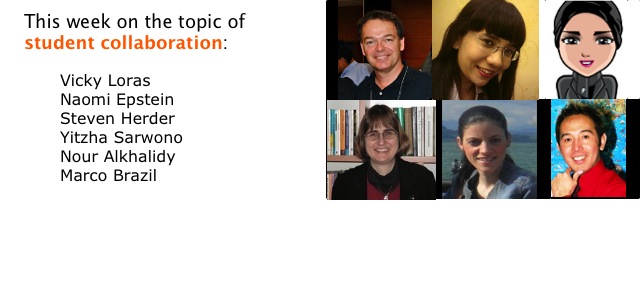Aza Aza Collaborating!
Language is the most amazing thing we can learn because we can apply it directly to our daily life in every way as we communicate, socialize and collaborate with others. Since the purpose of learning a language is to communicate, it’s basically all about collaboration.
When students work together, they learn from each other and with assistance from their teacher and peers, extend their interaction and can even take their learning beyond the classroom. In collaborative learning, though, the teacher’s role is no longer a deliverer of material but rather a creative facilitator playing more demanding roles.
Some of these roles include:
- providing a comfortable setting for students
- making sure we put students in groups that cater to their abilities.
- ensuring that tasks are divided up in ways that are comfortable and manageable because when students feel comfortable they have the will to work better.
- reminding students that discussion and critical thinking are the ultimate ways of mastering the material they are working on.
- not interfering with the outcome
With experience, teachers can find ways to make collaborative tasks better. From my own experience I have learned to:
1. Assign tasks that are suitable for collaboration — tasks that are right for their ability and which are doable. As much as we want to push students to their limit, we should also make sure that we do not push them over the edge — especially if it’s the first project a group is working on together.
2. Encourage groups to distribute the work equally. Of course the teacher can assign roles to make sure of fairness, but it is better sometimes to let them work this out themselves, while the teacher observes.
3. Stage the first group activities in ways that build swift trust among group members so they can get to work on the task to attain useful results nicely.
4. Encourage Interaction so that as students do a task, they develop and build a good community feeling among themselves.
Using language is a social activity and if learning really is a social process, then learning how to collaborate is essential. Through collaboration, students not only discover new information, but also expand their horizons and develop themselves at the same time as they work together and push themselves to find ways to finish a task collectively.
In the end we need to make both teachers and students see that it’s not just about completing a task, but also about building a community.
Aza Aza Collaborating!










